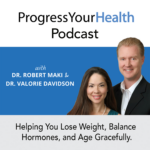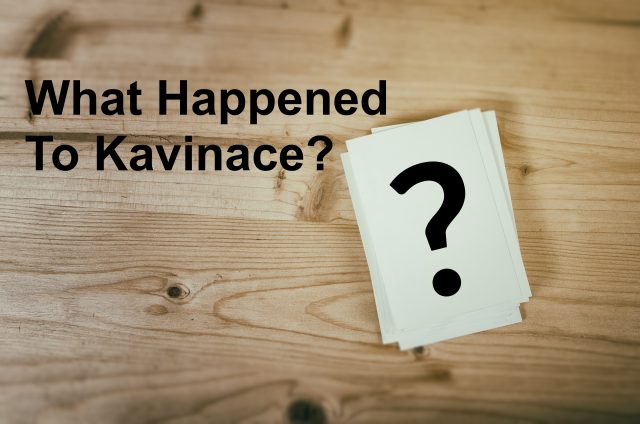

Kavinace by Neuroscience is no longer available as a supplement. April 10th, 2019, the FDA issued a letter to several nutraceutical companies to discontinue supplements containing 4-amino-3phenylbutyric acid. The FDA has determined that 4-amino-3phenylbutyric acid, also commonly referred to as Phenibut is not a dietary supplement. We published a previous Kavinace article shortly after the FDA letters were sent out.
As of the letter dated April 10th, the companies had 15 days to comply. This left people that had taken Kavinace safely for years in a bit of a quandary. Kavinace is, I mean, was a dietary supplement that many people took to help with staying asleep. It contained 950mg of a combination of taurine and 4-amino-3-phenyl butyric acid HCL per capsule.
Most people did well on one to two capsules taken at night before bed. It wasn’t a sleep medication, like Ambien or Unisom but did help to raise GABA to help with staying asleep at night. I used this myself and with patients to stay asleep at night.
Commonly in perimenopause and menopause, women have trouble staying asleep. Often they fall asleep easily but will wake up in the middle of the night for hours. And by the time they are able to fall back to sleep, it is time to wake up for the day. Kavinace was very helpful because it contained 4-amino-3-phenyl butyric acid, which is a precursor to GABA. Meaning it is easily digested and can cross the blood-brain barrier to help convert to GABA and stimulate GABA receptors to stay asleep.
One of the reasons that sleep is so important is terrible sleep can make you gain weight. People, especially women, will gain weight easily if they do not sleep well at night. Sleep is necessary for so many health reasons, it is also responsible in part for your metabolism. It really goes back to our adrenal glands.
The adrenals secrete cortisol in a diurnal fashion. Meaning that cortisol is released highest in the morning and stays up through the day and drops at night so that you can sleep well. Commonly, (especially in hormone imbalance, perimenopause, and menopause) you will see cortisol rise in the middle of the night. That causes us to wake up in the middle of the night for no reason.
Other than it is aggravating to be awake for hours in the middle of the night and tired during the day, the elevation of cortisol at night can negatively affect metabolism. Often we tell patients, forget waking up early to go to the gym. Just get that extra hour of sleep. One of the first things that we work on with patients is sleep. Sleeping properly is great for the waistline.
Well you might be asking, Kavinace is no longer available, what do I do now? There are many options available to replace Kavinace and sleep well. Back when I first found Kavinace years ago, all we had available to us was GABA. GABA is a huge molecule that is not easily absorbed through digestion, so it was a waste to take. Now we have available, PharmaGABA, which can be absorbed through the digestive tract.
PharmaGABA is a great alternative to Kavinace. You can take it as capsules at night or chewable tablets. If you are a tough sleeper, and still wake in the middle of the night, you can chew up 1-2 more tablets to help you fall back asleep and stay asleep, without feeling groggy in the morning.
Another important thing to consider when it comes to sleep is balancing the neurotransmitters. While Kavinace was a precursor to GABA, it is also important to balance dopamine and serotonin. Balancing Serotonin, Dopamine, and GABA is important for restful sleep. Often we will use products that contain 5HTP, which is a precursor to Serotonin and Mucuna pruriens standardized to 10-40% of L-Dopa which converts to dopamine.
When combining Mucuna pruriens and 5HTP with PharmaGABA can really help balance the neurohormones for healthy sleep. When people think of natural supplements for sleep, they think melatonin. Actually, melatonin can help you fall asleep, but it is not great to stay asleep.
Other ways to help with staying asleep through the night is glycine. Glycine is an amino acid that can help with feeling wound up and slow down the mind-racing. It usually comes as a powder which you mix up with water. I often like to recommend to patients to drink part of the glycine water before bed. If they wake up in the middle of the night, then finish the rest of the glycine water to fall back asleep easily without waking up groggy.
Also, phosphorylated serine is helpful for reducing cortisol levels at night to stay asleep. It doesn’t help you fall asleep, but it can help you stay asleep. Phosphorylated serine is, so it is more easily absorbed if taken with food that might have healthy fats in it.
Other options that you already know to help with sleep are no caffeine after 3pm. Also exercising, especially cardio exercise in the evening can raise your cortisol, causing trouble sleeping later that night.
Remember I talked about elevated levels of cortisol in the middle of the night causing waking? Well, that can come from low blood sugar. Let’s say you eat dinner at 6pm and nothing thereafter and go to bed at 10pm. By the time 2am comes, you have not eaten for 8 hours. Your blood sugar can drop. This causes cortisol to rise and stimulates the liver to do gluconeogenesis, which is a process to make blood sugar, even though you didn’t eat anything. This rise in cortisol from the low blood sugar makes you wake up in the middle of the night.
A good option, that I promise will not make you gain weight, is to have a bedtime snack. A small snack of protein and fat before bed is a great way to balance blood sugar to help you stay asleep at night.
We understand that you might have tried this and everything else and still have trouble staying asleep. This usually occurs in perimenopause and other hormonal imbalances. This is why we created the Perimenopause Masterclass.
If you are between the ages of your late ’30s to late ’40s and not only have trouble sleeping, but period issues, weight gain, moodiness, hair and skin issues, then this course might of interest to you.
At this point we have to say, the disclaimer …this is not meant for medical advice, please ask your doctor and if your doctor doesn’t know, get a new doctor, and this information is intended for educational purposes only, etc. But I understand that you might have more questions, please reach out anytime to [email protected]
The post What Happened to Kavinace? | PYHP 058 appeared first on .
Discover the common and unfamiliar symptoms that you might be experiencing. Get access to cases of real women with hormonal conditions.

In this episode, we discuss a question from Janice, a podcast listener’s question regarding the benefits of estrogen therapy for heart health. There is much evidence to show that estrogen has cardiovascular protective benefits. We wanted to discuss how estrogen benefits heart health and can help reduce the risk of cardiovascular disease. Janice’s Question: Are […]
In this episode, we talk about the benefits of estrogen on bones. A listener’s question (Alison) inspired this episode. Alison asked if taking vaginal biest has the same heart and bone effects that other estrogens and estrogen therapies have. So, we wanted to expand on estrogen’s role in helping keep bones strong and healthy. In […]
In this episode, we talk about hormone treatments for perimenopause and menopause. There is a vast distinction between perimenopause and menopause when it comes to treatment options. We often see women who are being treated for menopause when they are genuinely not in menopause. Meet Linda: Linda is a listener who sent us a question […]
Recently, Catherine posted a question on our website about Biest cream, and we knew this could interest our listeners. Biest is a combination of estriol and estradiol, one of the most common forms of estrogen therapy used in bio-identical hormone replacement. There are many doses, ratios, options, and methods of using Biest, so we thought […]
Welcome to the Progress Your Health Podcast! This is a podcast that helps you learn about balancing hormones, especially during perimenopause and menopause. We love hearing from our listeners. If you have a question, please visit our website and click Ask the Doctor a question. Let’s read Brigitte’s question! I have been listening and learning […]
In this episode, we talk about the difference between perimenopause and menopause. Both Dr. Maki and I (Dr. Davidson) have worked with women in perimenopause and menopause since 2004 and sometimes get a bit myopic and technical when it comes to explaining the differences. The other day, a patient of Dr Maki’s asked the question, […]